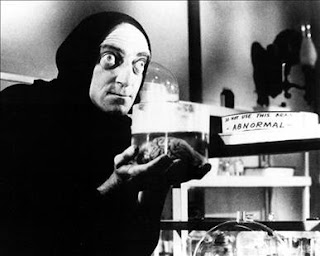I have a bunch of half-baked ideas swirling around in my head after reading the following description of kundalini and shamanic initiatory illness at the Beyond Meds blog (also reprinted below). I’m nowhere near as knowledgeable about kundalini and altered states as most others who write on this topic. I haven’t experienced protracted drug withdrawal, which is how some people may experience kundalini, but I’ve undergone something like a shamanic initiatory illness — the experience of becoming “sick” in synch with someone else and then getting better once the other person shows signs of recovery.
I had a gut feeling all along that I would know that Chris was on the path to recovery when I got physically sick. My original thinking is that this sickness would be a stress reaction on my part that would emerge after the major stress with Chris was over. I had no idea what form this illness would take, and hoped it wouldn’t be something life threatening. As it happens, for a period of about two years, and ending a year ago, I had inexplicable spells of vomiting. Since I rarely vomit, it was a concern to me that every three months I had violent (and I mean violent) spells that would last a couple of hours, or, in one case, about three days. The first time this happened was after I meditated on a full stomach — not the smartest thing to do, I learned to my regret. More often than not, I couldn’t link the vomiting to anything specific I had done.
I wondered, during this period, if I was literally purging myself of sadness, guilt, trauma, and preparing myself for a new phase of life. Chris’s crisis situation reached a peak in early 2009 when he went into the psychiatric hospital for the third time. By November 2010, tired of the recurring vomiting and now swollen ankles, I finally decided to see a doctor, who ran some blood tests. My liver enzyme levels were alarming. I read with horror what normal levels were supposed to look like compared to what mine were. I booked an appointment for another blood test and then to discuss the results with a specialist.
In the meantime, I meditated on my health problems, using decree and divine light as the mechanism of healing. I went for a Thai massage and imagined the masseuse bathed in golden light while she worked on different parts of my body. The swollen ankles disappeared right after the massage. By the time I saw the specialist, he reported that the test results were normal. I have not had a problem since.
One explanation for this cleansing process that I went through and for Chris largely overcoming his mental health problems might be that we both learned to see Chris’s so-called illness as in a more positive perspective. We embraced the “mental illness” and the physical illness, meaning we saw the good in it and a process we knew we had to go through. There was a reason for it, and we might as well learn something from it and maybe even enjoy it while it lasted. I started to see Chris as a shaman, a healer, who was put here in part to bring healing to those around him. I encouraged him to find out who he is by visiting other shamans and learning from them. So, in my own way, I, too, became a shaman. The process of becoming a shaman is democratic. Anyone who believes can join.
Kundalini is a neuro-psycho-spiritual developmental potential that traditionally resides latent at the base of the spine until it is activated. It can be activated on purpose by spiritual practice, or by accident through physical or psychological trauma. Once it is activated, it involves a deep cleanse or purge of the body, psyche, and spirit. Psycho-physiological traumas from throughout the lifespan are repaired. The grueling symptoms listed above are merely the side effects of this repair process.
The final result is a rewired neuro-endocrinological system. The person who goes through the process and comes out the other side takes a quantum leap in health, happiness, peace, wisdom, sense of mission, and, potentially, “extended human capacities,” or what we call psychic abilities. It’s like being born again into a second life without actually dying in between. And it’s supposed to result in a literally more evolved human being.
A shamanic initiatory illness is a transformative ordeal that either comes on unexpectedly with no known precipitating event or can be activated on purpose by spiritual practice. It shows up as an odd amalgam of mental and physical symptoms, as mentioned above; is typically very debilitating; and takes the individual to very odd and dark mental and physical places. Interestingly, the illness seems to create a field that affects family and friends around the sufferer, who sometimes go through their own tough times in parallel.
Most initiations seem to be involuntary and un-asked-for, and, consequently, resisted. Eventually, the resistance in broken down, and the sufferer agrees to be a shaman. Symptoms can remit quite dramatically once the initiate starts to “shamanize” in some way, such as performing healings (using herbal knowledge, psychic healing, or a combination) or divination, involving knowledge and abilities s/he did not have before the illness. Shamans are considered to be more advanced in their development or more evolved than people who have not gone through the initiation.
Jayme at Rayne’s World, in a similar vein, relates how she overcomes dissociation, one of her many debilitating symptoms.You can read the full post here.
She writes: This method also worked with Dissociation. The diagnosis used to be called Multiple Personality Disorder. If I have other personalities inside of me, why not get to know them and embrace them and learn from them? They are there for a reason, and they are me! I could write a whole post on this subject alone (and maybe I will), but trying to fight off any aspect of myself, whether it is depression, anxiety, or multiple personalities, is only denying myself yet another human experience. I refuse to do that anymore. I have a right to experience being human because I am human!
So, what really happens when I embrace all these symptoms rather than fix (mask) them through psychiatric “treatments”? Hmmmm…. well, I very rarely have any of these symptoms anymore, and when I do, they don’t last nearly as long. To be honest, I can’t remember details of their recurrences anymore because they don’t stand out like they used to. They are no longer “bad” or “horrible” in my mind or my experience, so why make a note of them? It’s like having a rainy day. Who cares? It just happens. Anyway, my goal was never to make the symptoms go away. It just happened.
Probably the greatest benefit of using this method is the lack of fear and guilt I now have toward any of these symptoms creeping into my life.

